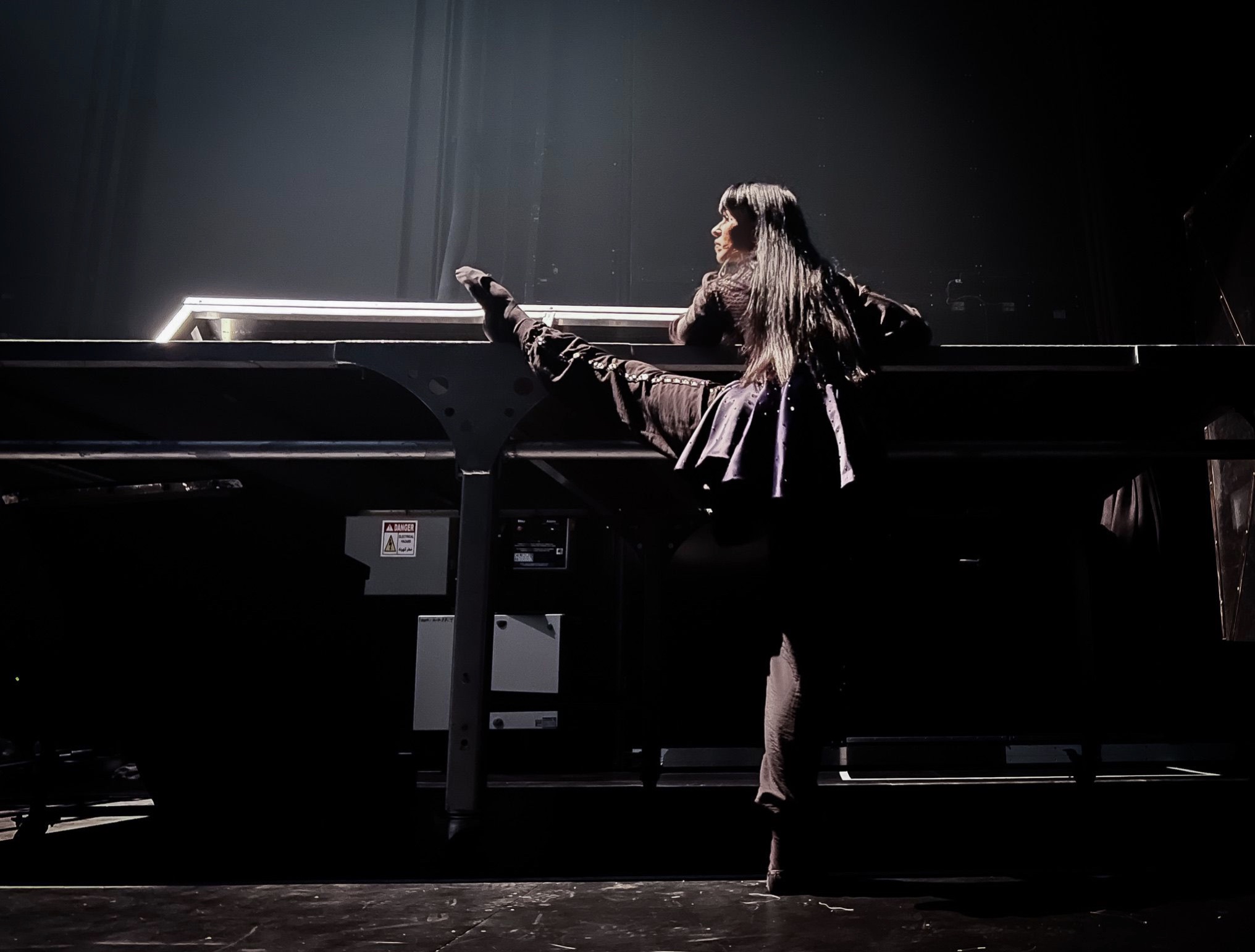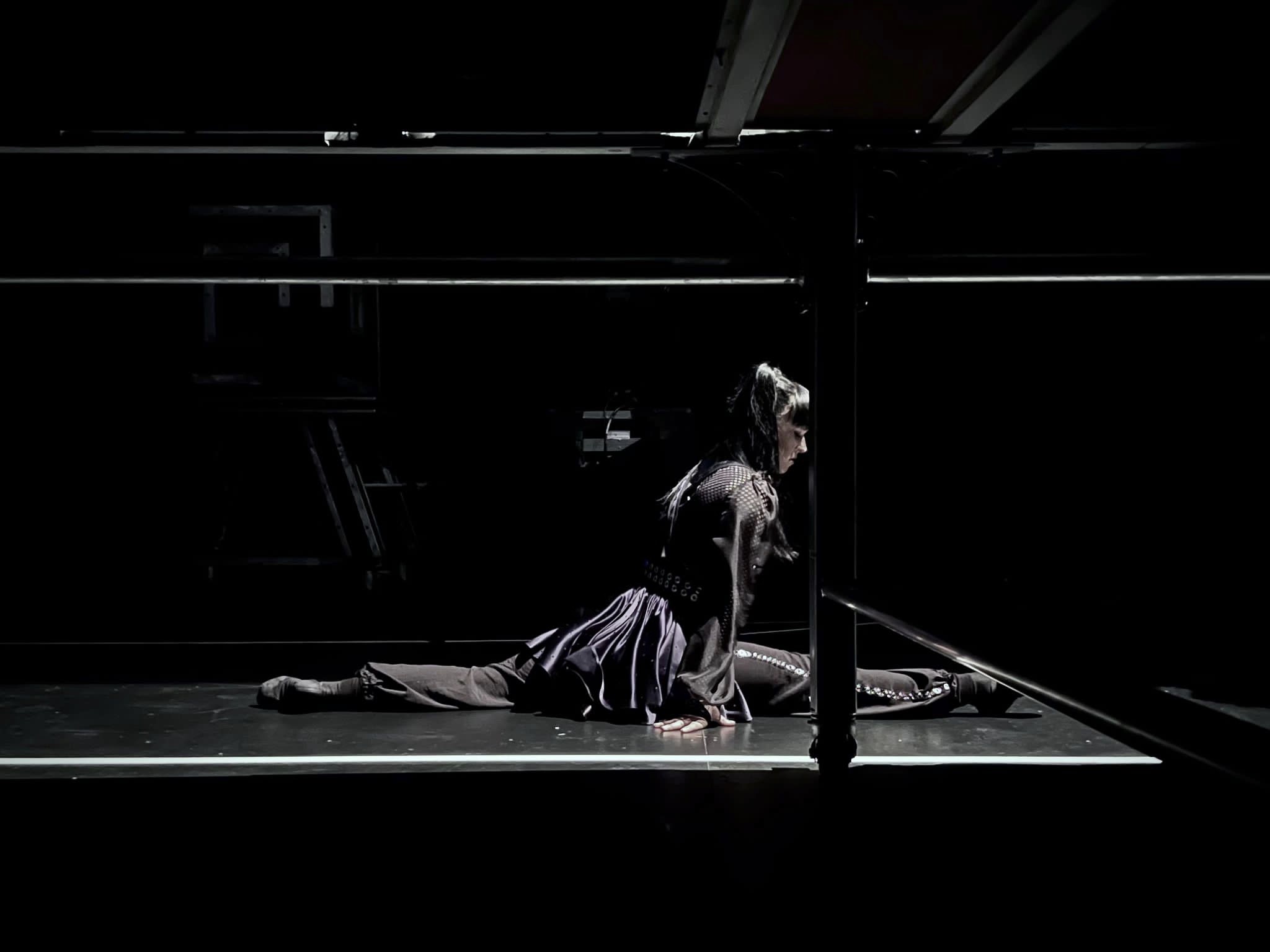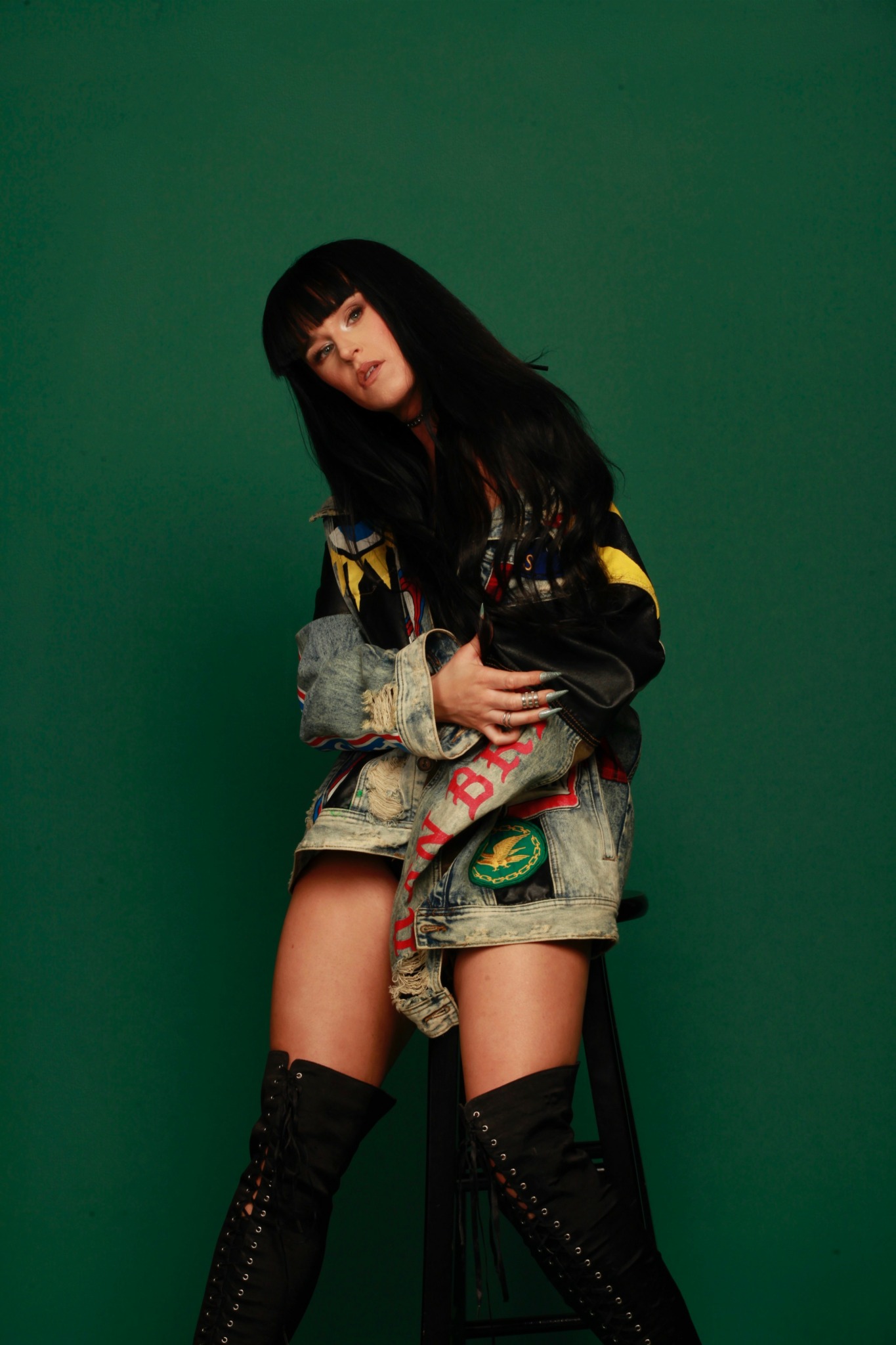We caught up with the brilliant and insightful Sarah Mc Ginley a few weeks ago and have shared our conversation below.
SARAH, appreciate you joining us today. How did you learn to do what you do? Knowing what you know now, what could you have done to speed up your learning process? What skills do you think were most essential? What obstacles stood in the way of learning more?
1. How did you learn to do what you do?
I started my journey at stage school, then moved on to ballet school, and eventually relocated to London to pursue full-time training. There, I dedicated myself to putting in my “10,00 hours” of practice, which is essential for mastering any craft. Once I felt ready, I began auditioning and taking classes in London, where I learned the most through real-world experience—on the job, collaborating with others, and adapting to different styles and choreographers.
Tips/Tricks:
Consistency is key: Dedicate time daily to practice, even if it’s just 30 minutes. Small, consistent efforts compound over time.
Diversify your training: Explore different dance styles (contemporary, jazz, hip-hop, etc.) to become a versatile dancer.
Learn on the job: Treat every audition, class, or performance as a learning opportunity. Observe others, ask questions, and stay open to feedback.
2. Knowing what you know now, what could you have done to speed up your learning process?
Honestly, I wouldn’t try to speed up the learning process. Everyone’s journey is unique, and your timing is your timing. My path took a bit longer than some, but I don’t regret any part of it. Every step—whether it was a challenging class, a failed audition, or a breakthrough moment—prepared me for where I am today. Rushing could mean missing out on essential lessons that shape you as an artist.
Tips/Tricks:
Trust the process: Embrace where you are right now. Growth happens at its own pace.
Reflect often: Keep a journal to track your progress, challenges, and breakthroughs. This helps you see how far you’ve come.
Stay patient: Focus on building a strong foundation rather than chasing quick results. Mastery takes time.
3. What skills do you think were most essential?
Two skills stand out as absolutely essential:
Musicality: Learning how to connect with music quickly and deeply transformed my dancing. Understanding rhythm, phrasing, and emotional expression in music allowed me to bring more life to my movements.
Human connection: Dancing isn’t just about technique—it’s about connecting with others. Whether it’s your fellow dancers, choreographers, or audience, building genuine relationships is crucial. Some call it “networking,” but I see it as being curious, open, and authentic with other artists.
Tips/Tricks:
Develop your musicality: Take time to listen to different genres of music. Practice counting beats, identifying rhythms, and expressing emotions through movement.
Collaborate often: Work with other dancers, musicians, and creatives. The more you collaborate, the better you’ll understand how to connect and communicate through art.
Be genuinely curious: Ask questions, listen actively, and show interest in others’ journeys. Authentic connections often lead to unexpected opportunities.
4. What obstacles stood in the way of learning more?
Finances were a significant obstacle for me. Many of the training programs, intensives, and mentors I wanted to work with were abroad or came with a high price tag. While I always found a way to make it work, money was often a limiting factor. If finances hadn’t been an issue, I would have immersed myself even deeper into training and exploration.
Tips/Tricks:
Seek scholarships and grants: Many dance programs and intensives offer financial aid. Research and apply for these opportunities.
Crowdfund or fundraise: If you have a specific goal (like attending an intensive), consider crowdfunding or hosting a fundraiser within your community.
Leverage free resources: Use online platforms like YouTube, Instagram, or dance forums to learn from free tutorials, classes, and workshops.
Barter skills: Offer to teach or assist in exchange for training. Many studios and professionals are open to trade-based arrangements.
Final Thoughts:
Your journey as a dancer is deeply personal, and every challenge you face shapes you into the artist you’re meant to become. Embrace the process, stay curious, and remember that growth often happens outside your comfort zone. Keep dancing, keep learning, and most importantly, keep connecting with others—it’s what makes the journey so rewarding.

Awesome – so before we get into the rest of our questions, can you briefly introduce yourself to our readers.
About Me:
I became a dancer because it was the only thing that made me feel truly alive. When I danced, I wasn’t overthinking—I was completely present, lost in the movement for hours at a time. I believe you have to be a little obsessed with your craft to take it beyond a hobby, and that’s exactly what I did. Dance chose me, and I’ve dedicated my life to it ever since.
Today, I wear many hats in the dance world: I’m a professional dancer, dance teacher, choreographer, and judge at competitions. My journey has taken me from a small town in Ireland to the vibrant stages of London, New York, and finally Los Angeles. Along the way, I’ve had the privilege of performing, teaching, and creating art that inspires others.
What I Do:
I specialize in bringing movement to life through choreography and artist direction. Whether it’s crafting pieces for competitions, directing creative projects, or helping dancers refine their artistry, I love collaborating with others to create something meaningful. My services include:
Choreography: Tailored pieces for competitions, performances, or personal projects.
Artist Direction: Helping dancers and performers connect with their unique style and storytelling.
Dance Instruction: Teaching technique, musicality, and performance skills to dancers of all levels.
Competition Judging: Providing constructive feedback to help dancers grow and excel.
What Sets Me Apart:
What makes my work unique is the depth of my journey and the authenticity I bring to every project. Coming from a small place in Ireland with limited resources, I know what it’s like to dream big and work tirelessly to make it happen. I’ve traveled the world, trained in diverse styles, and learned from some of the best in the industry—all while staying true to my roots and my love for dance.
I’m not just a choreographer or teacher; I’m someone who understands the heart and soul of a dancer. I know how to push boundaries while nurturing individuality, and I’m passionate about helping others find their voice through movement.
What I’m Most Proud Of:
I’m most proud of the courage it took to pursue my wildest dreams. Moving from a small town to London, then New York, and finally Los Angeles wasn’t easy, but it was worth every challenge. I’m proud of that fearless teenager who took the leap, and I’m proud of the artist I’ve become along the way.
What I Want You to Know:
If you’re a dancer, artist, or dreamer, I want you to know that your journey is valid, no matter where you start. Dance is about more than just steps—it’s about expression, connection, and storytelling. Whether you’re looking to refine your craft, create a stunning choreography piece, or simply connect with someone who understands your passion, I’m here to help.
Let’s create something unforgettable together.

How can we best help foster a strong, supportive environment for artists and creatives?
Supporting artists and creatives is essential for a thriving cultural ecosystem, as they bring innovation, beauty, and meaning to our world. However, artists often face unique challenges, such as financial instability, lack of access to resources, and undervaluation of their work. Here are some ways society can better support artists and creatives to foster a vibrant and sustainable creative ecosystem:
1. Financial Support and Fair Compensation
Grants and Funding: Governments, organizations, and private institutions should provide grants, scholarships, and stipends specifically for artists. This could include project-based funding, residencies, or living stipends to allow artists to focus on their craft without financial stress.
Fair Pay: Ensure artists are paid fairly for their work, whether it’s performances, exhibitions, or commissions. This includes transparent payment structures and contracts that protect artists’ rights.
Universal Basic Income (UBI): Implementing UBI could provide a safety net for artists, allowing them to take creative risks without fearing financial ruin.
2. Accessible Education and Training
Affordable Arts Education: Make arts education more accessible by subsidizing tuition for dance, music, theater, and visual arts programs. This includes offering free or low-cost workshops and classes for underserved communities.
Mentorship Programs: Establish mentorship opportunities where established artists can guide emerging talent, sharing knowledge and opening doors to opportunities.
Online Resources: Expand access to free or affordable online tutorials, masterclasses, and resources for artists who may not have access to formal training.
3. Affordable Studio and Performance Spaces
Subsidized Spaces: Provide affordable studio, rehearsal, and performance spaces for artists. This could include partnerships with local governments or businesses to repurpose unused buildings.
Community Arts Hubs: Create multi-purpose arts centers where artists can collaborate, showcase their work, and connect with audiences.
4. Amplify Visibility and Opportunities
Platforms for Exposure: Support platforms (both physical and digital) that showcase artists’ work, such as galleries, theaters, online marketplaces, and social media campaigns.
Artist Residencies: Expand residency programs that offer artists time, space, and resources to create without distractions.
Public Art Projects: Invest in public art initiatives that commission local artists to create works for public spaces, fostering community pride and visibility for artists.
5. Policy and Advocacy
Arts Advocacy: Governments should prioritize the arts in policy-making, ensuring that arts funding is protected and expanded. This includes tax incentives for businesses that support the arts.
Copyright Protection: Strengthen copyright laws to protect artists’ intellectual property and ensure they are compensated for their work.
Healthcare and Benefits: Provide affordable healthcare, mental health support, and retirement plans tailored to the needs of freelance and self-employed artists.
6. Community and Cultural Support
Audience Development: Encourage communities to engage with the arts by making performances and exhibitions more accessible (e.g., pay-what-you-can tickets, free community events).
Collaborations: Foster collaborations between artists and other sectors, such as technology, education, and healthcare, to expand the reach and impact of creative work.
Celebrate Diversity: Support artists from diverse backgrounds, ensuring that underrepresented voices are heard and celebrated.
7. Corporate and Philanthropic Involvement
Corporate Sponsorship: Encourage businesses to sponsor arts initiatives, fund projects, or provide in-kind support (e.g., equipment, space, or marketing).
Artistic Partnerships: Create programs where artists can collaborate with brands or organizations in meaningful ways, rather than being exploited for exposure.
Philanthropy: Encourage private donors and foundations to invest in the arts, recognizing their value to society.
8. Mental and Emotional Support
Mental Health Resources: Provide access to mental health services tailored to the unique challenges artists face, such as isolation, rejection, and financial instability.
Community Building: Create networks and support groups where artists can share experiences, advice, and encouragement.
9. Value Art as a Necessity, Not a Luxury
Shift Perceptions: Society must recognize that art is not a luxury but a vital part of human expression and culture. This means valuing artists as essential contributors to society, not just as hobbyists or entertainers.
Art in Education: Integrate the arts into school curricula to foster creativity and appreciation from a young age.
10. Sustainability and Long-Term Investment
Long-Term Funding: Move beyond one-time grants to provide sustained funding for artists and arts organizations, allowing them to plan and grow over time.
Environmental Sustainability: Support eco-friendly practices in the arts, such as sustainable materials for visual artists or energy-efficient performance spaces.
Final Thoughts:
A thriving creative ecosystem benefits everyone—it enriches our culture, drives innovation, and fosters empathy and connection. By investing in artists and creatives, society not only supports individuals but also cultivates a more vibrant, inclusive, and inspired world. It’s time to recognize the immense value of the arts and take concrete steps to ensure that artists can thrive, not just survive.

We often hear about learning lessons – but just as important is unlearning lessons. Have you ever had to unlearn a lesson?
The Lesson I Had to Unlearn:
One of the most humbling and transformative lessons I’ve had to unlearn is the belief that being perfect for a role—or even being perfect in your craft—guarantees success. Early in my career, I thought that if I worked hard enough, honed my skills, and showed up fully prepared, I would inevitably land every job I auditioned for. But the reality is far more nuanced. Art is subjective, and so are the opinions of those who judge it. No matter how much you pour into your craft, there will always be factors beyond your control: the vision of a choreographer, the chemistry of a cast, or even the mood of a decision-maker in the room.
I remember a particular audition early in my career where I felt I had done everything right. I had trained relentlessly, understood the style, and connected deeply with the music. Yet, I didn’t get the role. At first, it felt like a personal failure, as if I wasn’t good enough. But over time, I realized that rejection wasn’t a reflection of my worth or talent—it was simply a mismatch of visions, timing, or needs.
The Backstory:
This lesson didn’t come easily. It took countless auditions, rejections, and moments of self-doubt to truly internalize it. There were times when I questioned my path, wondering if I was chasing a dream that wasn’t meant for me. But with each “no,” I began to see a pattern: the roles I didn’t get often led me to something better—a job that aligned more closely with my strengths, a collaboration that pushed me creatively, or even a moment of personal growth that prepared me for what was to come.
I learned that in the arts, and in life, we are not entitled to anything—not the roles we want, not the recognition we crave, and not the opportunities we feel we deserve. But what we are entitled to is the belief that what is meant for us will never pass us by. Every “no” is a redirection, not a dead end.
The Wisdom Gained:
This lesson taught me to approach my craft with humility and resilience. It reminded me that art is not about perfection or external validation—it’s about expression, connection, and the joy of creating. It also taught me to trust the process, even when it feels uncertain. The right opportunities, the right collaborations, and the right moments will find their way to you when the time is right.
Now, I see rejection not as a failure but as a stepping stone. It’s a reminder that my journey is uniquely mine, and every experience—whether it’s a “yes” or a “no”—is shaping me into the artist and person I’m meant to become.
Final Thoughts:
To anyone navigating the unpredictable world of the arts, remember this: your worth is not defined by the roles you book or the opinions of others. What’s meant for you will find you, often in ways you least expect. Trust your journey, embrace the lessons, and keep creating with all your heart. Because in the end, the art you make and the life you live are far more important than any single opportunity.
Contact Info:



